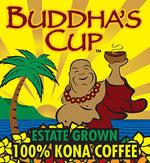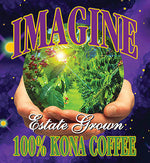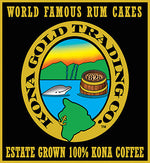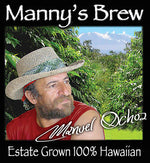Where is Kona Coffee grown? The answer matters more than most people realize.
True Kona Coffee only grows along the western slopes of Mauna Loa and Hualalai, inside a narrow zone called the Kona coffee region. This area offers rich volcanic soil, gentle weather, and steady rainfall.
These conditions create a slower-growing bean, known for its smooth texture and balanced flavor.
Over time, this region has built a reputation for producing some of the finest coffee in the world. But not all products that carry the name are genuine. We will explain how 100% Kona coffee differs from blends, how the region shapes each harvest, and what to look for when buying or visiting. Let’s explore the origin of something truly rare.

Key Takeaways
- Kona coffee only grows on the western slopes of two volcanoes in Hawaii’s Big Island.
- The narrow Kona Coffee Belt offers the exact climate and volcanic soil needed for world-class beans.
- Only coffee from this region can legally carry the “Kona coffee” name.
- Family-owned farms like Buddha’s Cup focus on biodynamic farming and small-batch quality.
- Visitors can take part in immersive Kona coffee tours that show every step of the process.
- Look for “100% Kona Coffee” labels to avoid misleading blends and imitations.
Where Is Kona Coffee Grown?

So, where is Kona Coffee grown exactly? Kona coffee grows on the western slopes of Mauna Loa and Hualalai, two massive volcanoes on the Big Island of Hawaii. This unique area, called the Kona Coffee Belt, runs through the North and South Kona Districts.
It measures about one mile wide and stretches 30 miles long, forming a narrow strip of land that delivers world-class coffee.
The Kona coffee region stretches along elevations between 500 and 3,200 feet above sea level. This narrow zone on the western slopes of Mauna Loa and Hualalai receives consistent sunlight in the morning, followed by light cloud cover and rainfall in the afternoon. Cooler temperatures settle in by evening.
These steady conditions support the slow and even maturation of coffee cherries.
The soil, formed by centuries of volcanic activity, retains moisture without waterlogging the roots and supplies essential minerals that nourish the plants. Together, climate and soil shape the balanced flavor and smooth finish that define the beans grown in the Kona Coffee Belt.
A narrow stretch of Hawaii’s Big Island offers everything needed for growing true 100% Kona coffee. With its steady climate, mineral-rich volcanic soil, and ideal elevation, this land supports consistent, high-quality harvests. The officially designated Kona coffee region covers this terrain, where each bean reflects the care and environment behind it.
Unique Climate and Soil of the Kona Region
The Kona region follows a steady rhythm that shapes every coffee harvest:
- Morning sun warms the coffee trees and encourages photosynthesis, which helps the plants grow at a healthy pace.
- Afternoon cloud cover protects the developing cherries from heat stress, allowing them to ripen slowly and evenly.
- Cool evenings bring down the temperature gradually, which supports the preservation of sugars within the beans.
- Light, regular rainfall provides consistent moisture without overwhelming the soil, keeping the roots hydrated and healthy.
This balanced climate keeps the growth cycle steady and unhurried. Coffee cherries take their time to mature, building depth and complexity in flavor. The soil, made of volcanic rock, drains well and delivers a steady supply of minerals to each plant.
Together, these natural factors shape a cup that often features low acidity, a full body, and tasting notes like caramel, nut, or subtle fruit—the signature profile of high-quality Kona coffee.
The Kona Coffee Belt: A Defined Growing Area
The Kona Coffee Belt outlines a growing area that gives real meaning to the label 100% Kona coffee. This narrow strip sits between 500 and 3,200 feet above sea level, following the slopes of Mauna Loa and Hualalai.
While relatively small in size—just about one mile wide and 30 miles long—it offers a rare combination of altitude, rainfall, and soil chemistry that directly influences quality.
Within the Kona coffee region, several towns mark the heart of cultivation: Holualoa, known for its dense concentration of artisanal Kona coffee farms; Kealakekua, rich in cultural and agricultural history; and Captain Cook, a hillside community deeply tied to farming tradition. These aren’t just places on a map. They form the working core of the belt, where farmers apply techniques passed down through generations.
Coffee that grows outside this belt can’t carry the same name.
Legal standards protect the Kona label, which only applies to beans grown within this exact zone. Knowing the boundaries of the Kona coffee belt helps explain not only where Kona coffee is grown, but also why it remains one of the most respected regional coffees in the world.
Brief History of Kona Coffee Cultivation

In 1828, Samuel Ruggles brought coffee to the Kona District, planting the first trees using cuttings from Brazil. Unlike other parts of the world where coffee cultivation quickly moved to large estates, Kona developed differently.
The steep terrain and modest land plots led to the rise of small, family-run Kona coffee farms.
Families worked side by side, tending to each tree by hand and managing every part of the process—planting, harvesting, and drying beans without machinery.
By the late 1800s, coffee had become a central part of life in the Kona coffee region.
The work was hard, the yield was modest, but the dedication remained steady through generations. Farmers faced everything from price crashes to pests, but they adapted with care and resourcefulness.
This commitment shaped a farming tradition rooted in quality, not quantity.
Today, these values still guide the growers who preserve the legacy of 100% Kona coffee, ensuring that each bean reflects the hands and land behind it.
Source: Hawaii Coffee Association
Buddha’s Cup: Exemplifying Kona Coffee Excellence

At Buddha’s Cup, growing coffee begins with respect for the land.
Since 2004, our family has farmed in Holualoa, a hillside town in the Kona coffee belt known for its elevation and climate. We manage five separate estates, each at a different altitude, to capture unique flavor profiles and ensure consistency across batches. Our team practices biodynamic farming, a method that avoids synthetic chemicals and focuses on soil health, plant cycles, and natural harmony.
We view farming as a living system, where everything we do affects the outcome in the cup.
Innovation plays a major role, too. We’ve introduced techniques like UVB light exposure during processing to enhance flavor and aroma naturally. We also offer immersive experiences that let visitors explore the fields, learn the process, and connect directly with the story behind every bean.
This hands-on approach helps us produce 100% Kona coffee that fully represents the environment, tradition, and care of the Kona coffee region.
Visiting Kona Coffee Farms
Visiting a Kona coffee farm adds a new layer to every cup. Walking the rows, feeling the volcanic soil underfoot, and speaking with the growers turns coffee into something you can see, touch, and understand.
Popular Kona coffee tours include:
- Buddha’s Cup:Our immersive experience includes a guided tour through the estates, hands-on lessons about the coffee lifecycle, a cupping session to taste our range of beans, and insights into our biodynamic farming approach. Visitors also get a behind-the-scenes look at our UVB processing innovation.
- Greenwell Farms: A historic operation that dates back to the 1850s. Their tours explore large-scale production, traditional pulping methods, and historical exhibits about the evolution of Kona coffee farms.
- Mountain Thunder Coffee Plantation: Located at a higher elevation than most farms, their tours focus on high-altitude growing techniques, detailed roasting demonstrations, and the role of microclimates within the Kona coffee belt.
Every tour highlights how coffee cherries move from tree to cup. You'll see how beans are picked, sorted, pulped, fermented, sun-dried, roasted, and brewed. And yes, you’ll taste the difference that care and location make.
How to Identify Authentic Kona Coffee
Labels reveal the truth behind the bag. 100% Kona coffee means every bean in that package was grown in the official Kona coffee region. No shortcuts. But many products labeled “Kona blend” contain as little as 10% actual Kona beans, with the rest sourced from lower-cost regions.
To avoid getting misled, keep these tips in mind:
- Look for the “100% Kona Coffee” label. This label means every bean in the bag was grown in the certified Kona region of Hawaii. If the percentage isn’t listed, chances are high that the coffee includes filler beans from other places. This misleads buyers and reduces the quality and flavor you expect from authentic Kona coffee.
- Check for certification or traceable origin.Trustworthy Kona coffee farms, like Buddha’s Cup, openly share details about their farm location, growing altitude, and processing methods. These identifiers prove the coffee’s connection to the land and give you confidence in its quality.
- Buy directly from certified farms or trusted sellers. When you purchase straight from a farm or a vetted source, you’re more likely to receive fresh, ethically grown coffee. It also supports local Hawaiian farmers who maintain high standards of care and sustainability. You gain better transparency into how the coffee was grown, harvested, and handled, making your purchase more than just a transaction—it becomes a direct investment in the values and legacy of the Kona coffee region.
Choosing genuine Kona coffee supports the farmers, protects the region’s legacy, and guarantees the smooth, balanced flavor that defines coffee grown in the Kona coffee belt.
Source: Mashed
Global Reputation of Kona Coffee
Authentic Kona coffee from Hawaii has earned a global reputation, appearing in specialty shops from Tokyo to New York and receiving praise from chefs, baristas, and coffee judges alike. Its unique flavor profile and consistent quality have brought home awards, featured in documentaries, and landed spots in international tasting competitions.
This recognition reflects decades of consistent effort by farmers and the rare growing conditions found only in the Kona coffee region.
Every bean grown in this area results from hands-on cultivation, predictable climate patterns, and volcanic soil packed with minerals. These factors combine to create the signature profile that defines Kona coffee around the world.
While Hawaii attracts millions with its beaches and scenery, many return home remembering the taste of genuine Kona coffee. Among its exports, Kona coffee in Hawaii stands out as a symbol of craftsmanship and heritage worth preserving.
The Last Sip: Why It Matters Where Your Coffee Comes From

Where your coffee comes from affects everything—taste, quality, and the story behind every cup. In the case of 100% Kona coffee, the answer reaches into the heart of Hawaii’s Big Island, where the land and the people work in harmony.
Understanding the origin helps explain the rich, smooth flavor you get with each brew.
When you choose Kona, you support a network of small farms within the official Kona coffee belt. These growers use methods passed down over generations. They plant, harvest, and process by hand.
They care deeply about the soil and understand how every tree responds to its environment. This is coffee grounded in culture and grown with intention.
We invite you to experience this yourself. Walk the fields, talk to the farmers, and taste coffee made at its source. At Buddha’s Cup, our team works every day to protect that tradition and share it with the world.
Join our Coffee Club or shop our collection to enjoy a piece of Kona right at home.
FAQs
What makes Kona coffee different from other types of coffee?
It is the unique growing conditions that only exist in the Kona coffee region which makes the Kona coffee special. The particular belt of land in Hawaii’s Big Island provides a unique combination of volcanic soil, a steady rainfall, moderate climate, and rich sunlight.
Due to the conditions, the beans take their time in ripening, allowing complex sugars to form and giving a naturally sweet, balanced flavor.
In favorable conditions, each bean matures to provide a smooth taste, with moderated acidity, and characteristic notes from nutty, chocolaty to lightly fruity depending on the roast level. Apart from its unique taste, the production of Kona coffee contributes to its quality. Using classic techniques such as hand-picking and limited-batch roasting, producers have a close hold on the final product.
This unusual combination of place and production makes Kona coffee more than just a drink; it is the island’s environment and its cultural heritage.
Can I visit Kona coffee farms all year round?
Yes, In fact, many Kona coffee farms are open throughout the year providing visitors guided tours, tastings and educational programs.
Although the peak harvest period is August to January, it is equally worthwhile to visit the Kona coffee farms at other times. Tourists can walk the grounds, talk with farmers, and learn about the process of turning coffee beans into packaged products.
When there are fewer crowds, the off-season allows visitors to interact more closely with the farm team, learning the ways of things on a day to day basis. Some Kona farms, such as Buddha’s Cup, create thorough tours that give a taste of the beans and a close-up look at their organic and biodynamic farm practices.
Touring the coffee farms in the Kona region, irrespective of the time of year, gives a realistic insight into the Kona coffee production process (from growth to the harvesting stage and beyond).
Is 100% Kona coffee worth the price?
Yes, and here’s why. 100% Kona coffee represents a specific origin, strict growing standards, and limited availability. Unlike blends that may include only a small percentage of Kona beans mixed with lower-cost beans from other regions, 100% Kona means you’re drinking coffee grown entirely within the Kona coffee region.
This comes with traceability—you can know the farm, the altitude, and the methods used.
The high cost reflects the labor-intensive work, from hand-picking to small-batch roasting, and the fact that land in this area is scarce and precious. You're also paying for freshness.
Most Kona coffee is roasted and shipped in small quantities, which means what you receive hasn’t been sitting in a warehouse. In short, the price covers flavor, origin, ethics, and quality control.
For coffee drinkers who value more than just a caffeine boost, it’s well worth the investment.
What is the difference between Kona blend and 100% Kona coffee?
A Kona blend can legally contain as little as 10% Kona-grown beans, with the rest made up of lower-quality beans from other countries. This is why many blends don’t taste anything like true Kona.
In contrast, 100% Kona coffee guarantees that every bean comes from the certified growing zone along the slopes of Mauna Loa and Hualalai.
This distinction matters not only for taste but also for supporting the small, local farmers who grow within the Kona coffee region. Blends often use the name “Kona” to capitalize on its reputation, even if the flavor and quality fall short. When buying coffee, always check the label.
If it doesn’t say “100% Kona,” you’re likely getting a watered-down version of what makes Kona coffee so special.
How can I make sure I’m buying authentic Kona coffee?
Start by reading the label. Make sure that authentic 100% Kona coffee has both its origin and complete percentage on the label. Be sure to see the name of the farm, the roast date, and credentials, if any, are listed on the package. Be careful about the packages saying “Kona” with ambiguous claims that do not specify the percentage of true Kona coffee beans they contain.
Unlike other coffee growers who may hide their practices from the customers, authentic Kona coffee growers like Buddha’s Cup are open about their practices and enable their customers to buy directly from their online stores and farms. Pay attention to freshness labels; genuine Kona coffee is often roasted locally and shipped out shortly after roasting.
Whenever possible, select those farms and stores that are open about the origin and the production methods of the beans.
By doing so, you are guaranteed of genuine Kona coffee, while at the same time promoting farmers committed to maintaining the superior quality of Kona coffee.













